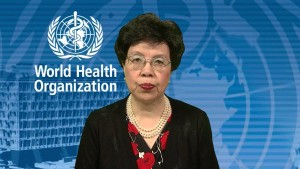
Ebola Outbreak News
Like many of my readers I have been following the recent Ebola outbreak with some concern. I was send the following information this morning which I thought would be useful to share.
Unless Ebola control measures in West Africa are enhanced quickly, experts from the World Health Organization (WHO) and Imperial College, London, predict numbers will continue to climb exponentially, and more than 20,000 people will have been infected by early November, according to a new article in the New England Journal of Medicine released six months after WHO was first notified of the outbreak in West Africa.
In the article, public health epidemiologists and statisticians reviewed data since the beginning of the outbreak in December 2013 to determine the scale of the epidemic, better understand the spread of the disease, and what it will take to reverse the trend of infections.
Scale of epidemic
Although WHO was first notified of the outbreak on 23 March 2014, investigations retroactively revealed the outbreak started in December 2013. Between 30 December 2013 and 14 September 2014, a total of 4507 cases were reported to WHO.
The data in the study help clarify some details of who is most affected by this outbreak. For example, there have been mixed reports on whether women might be harder hit because they are more likely to care for sick, or whether it would be men who might be more likely to bury the highly-infectious dead bodies.
“This study gave us some real insight into how this outbreak was working, for example, we learned there is no significant difference among the different countries in the total numbers of male and female case patients,” says Dr Christopher Dye, Director of Strategy for WHO, and co-author of the study. “There may be differences in some communities, but when we actually looked at all the data combined, we saw it was really almost split 50-50.”
The extensive review of data also allowed for a closer look at case fatality rate.
“Assessing the case fatality rate during this epidemic is complicated by incomplete information on the clinical outcomes of many cases, both detected and undetected,” says Dye. “This analysis shows that by 14 September, a total of 70.8% of patients with definitive outcomes have died. This rate was consistent among Guinea, Liberia and Sierra Leone.”
But the case fatality rate was lower when only hospitalized patients were considered, supporting evidence that getting patients to good, supportive health care quickly makes a difference.
Spread of infection
The examination of the data also showed the spread more clearly. In late December, the first cases were reported in the forest areas of Guinea. By March, when the government sounded the alarm to WHO, cases had already spread from the forest area to the capital of Conakry. In May, the focus of the outbreak in Guinea expanded strongly to Sierra Leone and in June it really took hold in Liberia. From July onward, there were sharp increases in case numbers in all three countries.
Projections
Although the current epidemic in West Africa is unprecedented in scale, the clinical course of infection and the transmissibility of the virus are similar to those in previous Ebola outbreaks.
“We infer that the present epidemic is exceptionally large, not primarily because of biologic characteristics of the virus, but in part because of the attributes of the affected populations, the condition of the health systems, and because control efforts have been insufficient to halt the spread of infection,” says Dye.
There are challenges in this region that exacerbate the struggles to contain the virus quickly. Most importantly the health systems in all three countries were shattered after years of conflict and there was a significant shortage of health workers, leaving the system weaker than in other countries with Ebola outbreaks. In addition, certain characteristics of the population may have led to the rapid spread of the disease, for example, the populations of Guinea, Liberia, and Sierra Leone are highly interconnected, with extensive cross-border traffic at the epicentre and relatively easy connections by road between rural towns and villages and the densely populated capital cities.
“The large intermixing population has facilitated the spread of infection, but a large outbreak was not inevitable,” says Professor Christl Donnelly, Professor of Statistical Epidemiology, Imperial College and the MRC Centre for Outbreak Analysis and Modelling. “In Nigeria, for example, where health systems are stronger, the number of cases has so far been limited, despite the introduction of infection into the large cities of Lagos and Port Harcourt.“
The critical determinant of outbreak size appears to be the speed of implementation of rigorous control measures.
“Forward projections suggest that unless control measures – including improvements in contract tracing, adequate case isolation, increased quality of care and capacity for clinical management, greater community engagement, and support from international partners – improve quickly, these three countries will soon be reporting thousands of cases and deaths each week,” says Dye.
Experimental therapeutics and vaccines offer promise for the future, but are unlikely to be available in the quantities needed to make a substantial difference in control efforts for many months, even if they are proved to be safe and effective.
The risk of continued expansion of the Ebola outbreak is real. This study provides the evidence needed for an urgent wakeup call requiring intensive scaling up of control measures while working towards rapid development and deployment of new medicines and vaccines.



